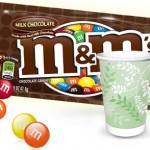Math and Children: The Chocolate Math Story
 I have shared lots of stories and strategies for teaching visual kids, but even adult learners need things to be more visual. Here’s a story about my time in a college statistics class, overwhelmed by the language and computation, until it became more visual.
I have shared lots of stories and strategies for teaching visual kids, but even adult learners need things to be more visual. Here’s a story about my time in a college statistics class, overwhelmed by the language and computation, until it became more visual.
The Chocolate Math Story
As an adult pursuing my master’s in Business Administration, I had first-hand experience of using visuals in a language-oriented, numeric computation class. It was Qualitative Analysis for Decision Makers, taught by a highly energetic, passionate professor who spoke fluent statistics. On the first day of class, I was completely overwhelmed by the new vocabulary, the calculation requirements and computer graphing assignments. I was out of my element, but as an adult, I was more aware of what the problems were. Determined to do whatever it took, I found a helpful tutor, drew lots of visual charts and pictures to illustrate concepts, learned, with much assistance, how to create graphs in Excel, and met with the instructor as needed.
What began as an overwhelming disaster became a very satisfying class, because the professor was highly committed to each person’s success and was willing to make adjustments to her own teaching style. She also used visual and tactile experiences to help us understand concepts before we spent time calculating. I vividly remember the day she came into class, with large bags of chocolate M&M candy and small paper cups. She proceeded to pass out small cups of candy to each student and we sorted, divided, counted and ate candy as she taught variance, means, range and deviations in groups of data.
This was so much better than more stats talk and another diagram on the chalkboard. I understood and remembered the information because of the visual, multisensory, concept oriented exercise. At my age, I can force myself to stay engaged to learn the material, but the visual, big picture concept and relevancy she conveyed made the subject much more enjoyable. The shift in language was also a huge help, as she adjusted her fluent statistical lingo to speak color and M&M. Understanding concepts in language we are familiar with, both verbal and visual, helps us gain understanding before we transition to specific subject matter prose.
What is your child’s learning style? There are three basic learning styles; visual, tactile, and auditory. Take the test and get immediate results: Is your child a visual learner?
 |
Bette FetterFounder and CEO of Young Rembrandts and Author of Being Visual |










